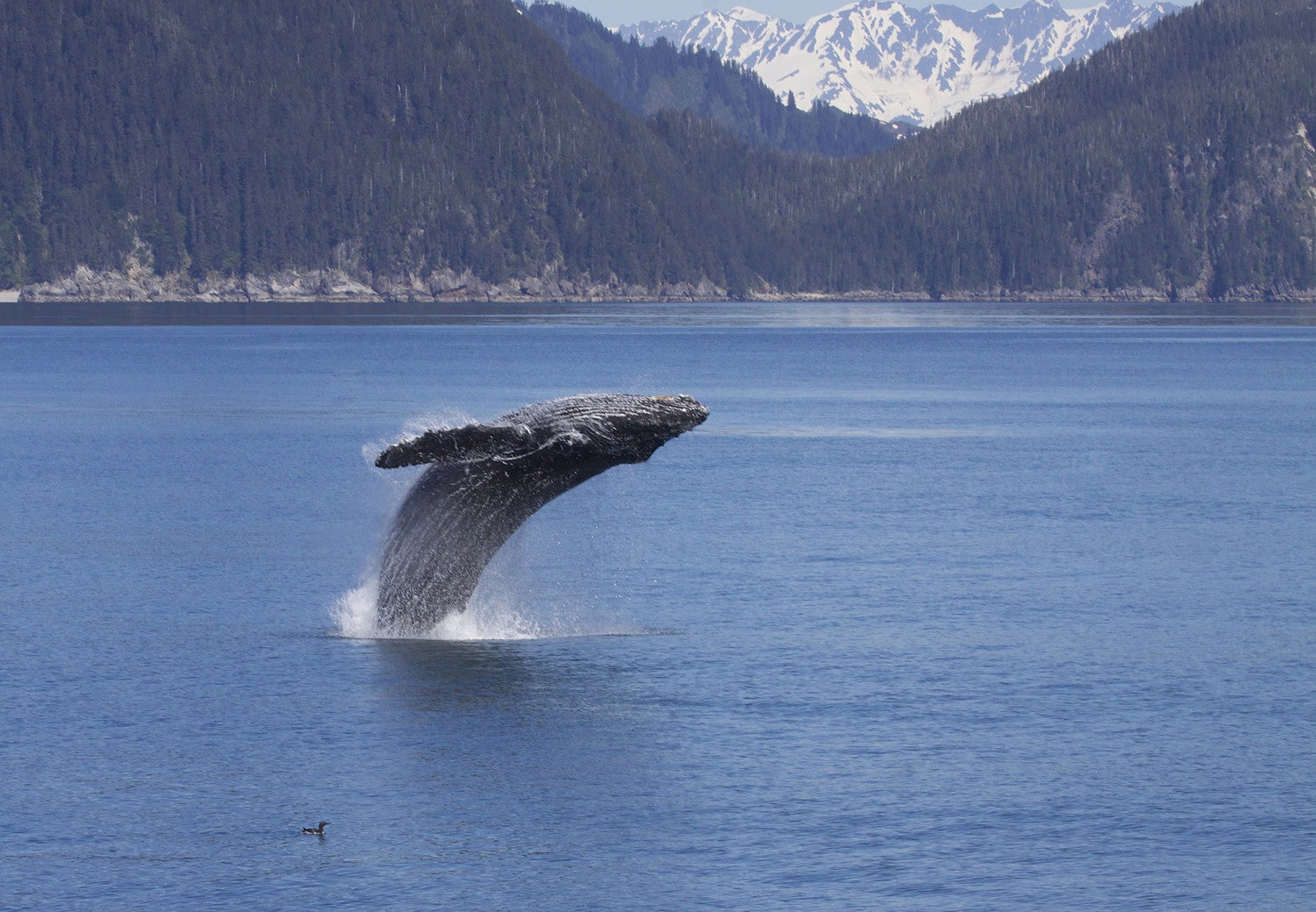Four Places to See Migrating Animals This Spring

'Gregory \"Slobirdr\" Smith'
After months of cold snaps and false starts, there’s no denying it: Spring is finally here. This is when we trade our skis and Netflix queues for hiking boots, and from tiny salamanders to massive humpback whales, the animal world is on the move as well. With all the changes underway outdoors, spring is the perfect time for a wildlife-focused walk in the woods or by the water.
Shorebirds
In the spring months, shorebirds migrate en masse between northern nesting grounds and their winter homes in Central or South America, following long-established routes to food and warm weather. It’s a yearly shakeup that transforms the natural world on two continents, and new arrivals can be spotted through the spring in much of the United States.
For a true shorebird pilgrimage, though, plan a trip to Gray’s Harbor on Washington State’s Olympic Coast or to the Copper River Delta in Alaska, where an annual shorebird festival celebrates the arrival of more than five million birds, including puffins, cormorants, and Arctic terns, which which clock almost 50,000 miles on their yearly round-trip voyage.
Salamanders
When when warmer weather rouses salamanders from a winter sleep, they begin an annual trip from from underground burrows to the vernal pools where they were born. Since those paths often cross busy roads, volunteer “crossing guards” come out in force on warm, wet nights to scoop up salamanders and other amphibians for a ride across the “squish zone.” To catch the amphibians on the move, attend a volunteer training, then join the ranks of animal-loving crossing guards.
Caribou
During the spring migration to Alaska’s coastal tundra, the plains of the Arctic National Wildlife Refuge rumble under the hooves of massive caribou herds. They’re headed to their summer stomping grounds to calve in peace and fatten on lush grass, willow leaves, and mushrooms for the lean winter months ahead.
Pregnant cows arrive at the North Slope by mid- to late-May, so to see the massive Porcupine Caribou Herd in their summer habitat, plan to visit the Arctic National Wildlife Refuge in May or June.
Whales
The offshore banks of the northeast are teeming with krill and other prey this month, which draws humpbacks, pilot whales, finbacks, and minke whales from their winter breeding grounds in warmer latitudes.
The most spectacular place to see them blow and breach may be Massachusetts’ Stellwagen Bank National Marine Sanctuary, the site of an underwater plateau that brings nutrient-rich cold water close to the surface. But their migratory paths extend far beyond Stellwagen Bank, so keep an eye on the water throughout the region for a chance to spot the whales in their summer homes.